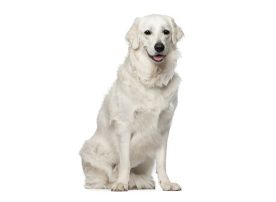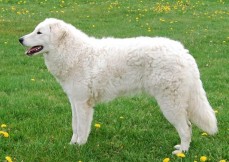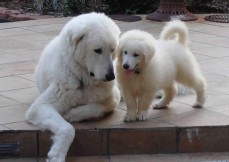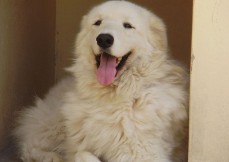Country of Origin: Hungary
Dog Group: Working dog breeds (AKC)
Origin of Name: The Kuvasz is an ancient breed of a livestock dog of Hungarian origin. Mention of the breed can be found in old Hungarian texts. It has historically been used as a royal guard dog, or to guard livestock, but has been increasingly found in homes as a pet over the last seventy years.
Shedding
A bit HighMonthly keeping cost
PremiumRs.7,000 Standard
Rs.5,000
Size
LargeBreed Info
Life Span: 10 to 12 years
Availability: Easy to get
About Kuvasz
The Kuvasz is perhaps the oldest of the three ancient dog breeds of Hungary, the other two being the Puli and the Komondor. He has a regal bearing and a history as complex as his personality. His almond-shaped eyes, black nose, and dense white fur make him an eye-catching breed. A Kuvasz's white coat is beautiful to behold, and has at times contributed to the breed's popularity as a "fashion dog." But they were bred to have white coats for reasons other than beauty: Their color helped shepards distinguish their dogs from wolves.
The Kuvasz is likely to have descended from giant Tibetan dogs, though it is regarded as a Hungarian breed. The name is actually Turkish, not Hungarian, and is derived from the word "kawasz," which means "armed guard of noblemen." This is because during the Middle Ages only nobleman favored by members of the royal family had could keep these dogs.
Kuvasz breeding in the 15th century was meticulously planned and documented, and the dogs became very popular on huge Hungarian estates, functioning as hunting and guard dogs. They were excellent in safeguarding the estate against predators and could handle large game like wolf and bear.
King Matthias I, a Kuvasz fancier, worked hard to improve the breed's quality and built a large kennel on his property to forward research.Centuries later common villagers were able to acquire Kuvasz as livestock dogs, and it was at that time that the breed's name was corrupted to its current spelling.
The two World Wars caused a serious decline in the numbers of the breed, but German stock was used as a reliable source to maintain continuity. In the 1930s, some dogs were imported to the United States, and in 1931 the American Kennel Club formally recognized the breed.
Maintenance
Visits to Groomer- Low
Drooling- No
Bath- Rare
Tolerance to heat- Get a heatstroke
Tolerance to cold- Loves snow
Exercise Requirement-Lots
Hair & Coat
Under Coat- Yes
Colour- White
Coat Type- Hard
Hair Length- Flowing
Hair Density- Dense
Health
Kuvaszok are generally healthy, but like all breeds, they're prone to certain health conditions. Not all Kuvaszok will get any or all of these diseases, but it's important to be aware of them if you're considering this breed.
Canine hip dysplasia
Osteochondritis Dissecans
von Willebrand's Disease
Gastric dilatation-volvulus
Skin Cysts
Dry Eye
More
Temperament
The Kuvasz is a spirited dog of keen intelligence, determination, courage, and curiosity, sensitive to praise and blame. He's devoted to protecting his family, especially children, and is suspicious of strangers. If a family member appears to be in danger, he acts on his own initiative. Adult Kuvaszok are gentle and patient with children, but puppies can be too rambunctious for young kids.
Training & Intelligence
Kuvasz are intelligent dogs and, with the inborn independence. Training can be difficult and requires a lot of patience, time, and consistency. They do want to be a part of a family and can be excellent family dogs if given proper training and socialization right from the start. Puppies are playful well into adolescence, but older dogs usually are calm and reserved. Excessive barking, however, can be a problem at any age, depending on the individual dog.
Breeding
Litter Size - 6 to 8 puppies (approximately)
Complication in Breeding- No
Procreation
Kuvasz are generally healthy breed , living on average about 10 to 12 years. Generally a dog takes around 18 months to reach his or her full height and structure. It is advisable to breed your dogs after at least two years of age. If you are a first timer at breeding then taking a vets help.

 DogExpress
DogExpress



















 in Chandigarh, India.
in Chandigarh, India. 
